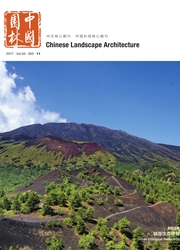

 中文摘要:
中文摘要:
先秦园林是以湿地生态环境为基础的物质生产基地,是中国园林的雏形。它兼有水土保持、防灾及备战等功能,是先秦城邑的有机组成。苑囿与湿地环境的结合,深深烙印在传统文化中,对中国园林的发展产生了深远的影响。苑囿的利用与管理方式,反映了古人重视生态环境及资源永续利用的传统,体现了成熟的生态智慧。这对于今天利用、保护和管理环境及资源具有积极意义。在西方强势文明大量输入的今天,古人的这一大智慧不应被忽视。
 英文摘要:
英文摘要:
The origin of landscape architecture in China should be dated back to the ones in the Pre-Qin period, which were based on wetlands and were distinct from most of what emerged later. Pre-Qin landscape architecture was essentially pieces of land of fertility and productivity. It also served as reservoir, buffer to natural hazards and military backup. It was a typical composition of a city state. The influcllce of wetland on landscape architecture was significant. Pre-Qin landscape architecture and its descendants in Qing period revealed great wisdom on sustainable environment care and mananagement, which still enlightens today.
 同期刊论文项目
同期刊论文项目
 同项目期刊论文
同项目期刊论文
 期刊信息
期刊信息
